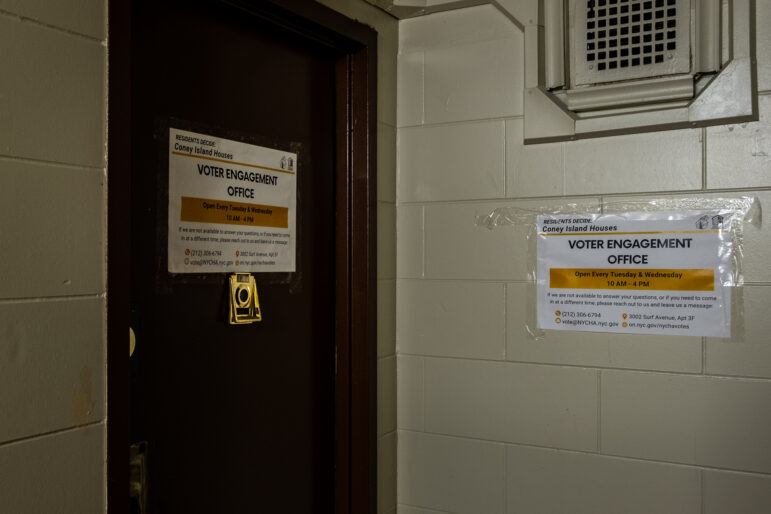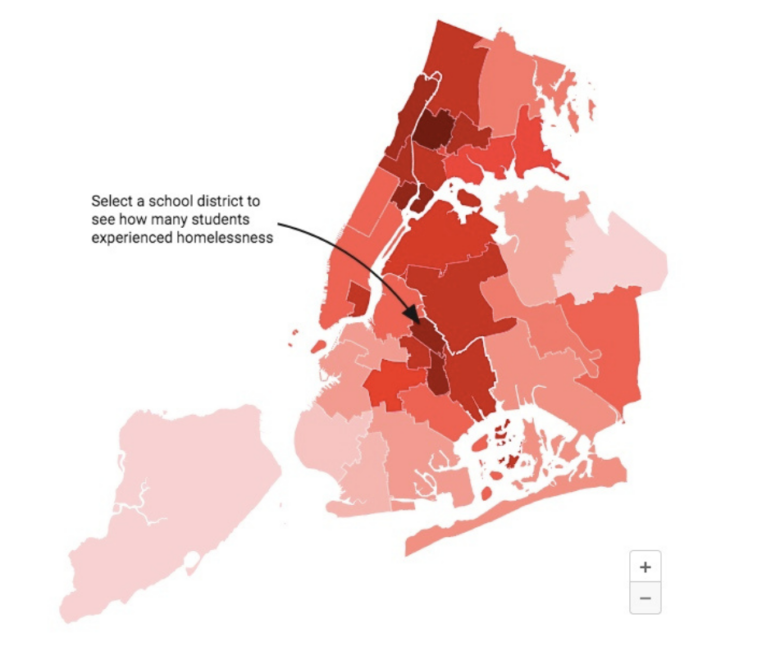Coney Island Houses residents are the first to choose to stay in traditional public housing since NYCHA began holding these elections last year.

Adi Talwar
A view of NYCHA’s Coney Island Houses campus from the Coney Island Boardwalk.Voting sessions at NYCHA’s Coney Island and Unity Towers Houses, in which residents were asked to choose which funding model they want for their development, came to an end Thursday.
Early tallies for the two sites, released Friday, yielded different results.
A majority of the voting tenants at the Coney Island Houses have so far opted to remain as a federally-funded Section 9 development—the first to choose to stay in traditional public housing since NYCHA began holding these elections last year.
Unity Towers Houses, the neighboring complex, chose to join the Public Housing Preservation Trust model, joining two other developments slated to convert to the newly-minted initiative.
A 20 percent participation threshold must be met in order for results to be considered valid, according to the legislation that established the Trust. At the Coney Island Houses, 57 percent of heads of household voted, while 59 percent took part at Unity Towers.
Preliminary results were read off Friday by Caleb Kleppner and Kenneth Mostern, principals of MK Election Services, the third-party company hired to oversee the tabulation.
Of the 406 votes registered at the Coney Island Houses, 239 chose to remain in Section 9, 125 votes were counted for the Trust and 42 votes for PACT, according to Kleppner. Four votes were considered invalid, which can happen if a tenant marked more than one option on their ballot.
Moments later, votes at Unity Towers were calculated, showing a total of 189, with 106 residents opting for the Trust, 71 choosing to stay in Section 9 and 11 for PACT. Two of the votes at Unity Towers were considered invalid.

Adi Talwar
The “voters engagement office,” at Coney Island Houses during the 30-day voting period.Over the course of 30 days, residents chose from three different funding models. “Option 1” was to join the Trust, signed into law in June 2022 by Gov. Kathy Hochul.
Under this model, NYCHA would still manage the properties but convert them to a different, federally funded program called Project-Based Section 8, unlocking other methods of bringing in investment, such as bonds and mortgages that can be used to fund repairs.
To date, tenants at Nostrand Houses in Sheepshead Bay, Brooklyn, and the Bronx River Addition Houses, a senior development in Soundview, selected to join the Trust during earlier votes. Conversions at these two developments are expected to be completed in 2026, with construction starting soon after.
“Option 2” is the Permanent Affordability Commitment Together (PACT) program, introduced to New York City in 2016. Like the Trust, properties under PACT are converted to the more lucrative Project-Based Section 8. But instead of NYCHA managing the properties, a private management company takes over the operational front, carrying out tasks such as building and campus-wide maintenance, while the housing authority continues to own the land.
The choice that NYCHA tenants are already familiar with is “Option 3” or remaining in Section 9, the federal government’s traditional public housing program. But the housing authority has warned of funding constraints under Section 9, saying it receives only about $700 million a year in capital funds from the federal government, limiting the amount of repairs that can be done.
The Coney Island Houses need $110 million worth of capital repairs while Unity Towers needs $42 million, according to NYCHA. Across the entire portfolio, the housing authority needs close to $80 billion over the next 20 years for rehabilitation efforts.
“These results are preliminary and we expect additional mail-in ballots to arrive in the coming days. Mail-in ballots are valid and will be counted if they are postmarked no later than August 15, 2024, the final day of voting,” said Kleppner.
Final vote results are expected on Friday Aug. 23.








